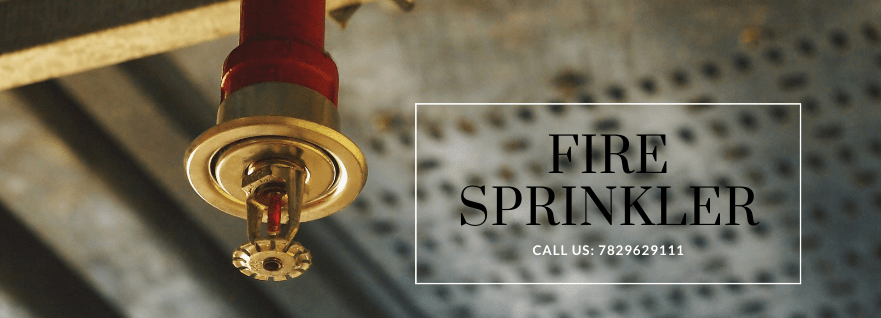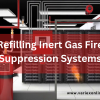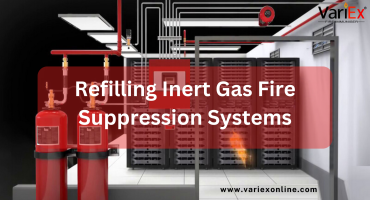![]()
Fire Immuniser
+91-7829629111
Email: info@variex.in
Varistor Technologies Pvt. Ltd.
Block-1, First Floor, Ardente Office One, Hoodi Circle, ITPL Main Road, Bengaluru, Karnataka 560048, IN
How Does A Dry Fire Sprinkler System Work
Fire sprinkler systems are crucial for safeguarding buildings and occupants against the devastating effects of fires. Among the various types of fire sprinkler systems, dry pipe systems are commonly used in environments where freezing temperatures are a concern. Understanding how a dry fire sprinkler system works is essential for ensuring effective fire protection in such environments.
Components of a Dry Fire Sprinkler System:
- Main Control Valve: Regulates the flow of water into the system.
- Dry Pipe Valve: Prevents water from entering the system until activated by a fire.
- Piping: Distributes water to the sprinkler heads throughout the building.
- Sprinkler Heads: Mounted on the ceiling and release water when triggered by heat.
Component | Description |
|---|---|
Main Control Valve | Regulates the flow of water into the system. |
Dry Pipe Valve | Prevents water from entering the system until activated by a fire. |
Piping | Distributes water to the sprinkler heads throughout the building. |
Sprinkler Heads | Mounted on the ceiling and release water when triggered by heat. |
How It Works:
- Unlike wet pipe systems, where water is constantly present in the pipes, dry pipe systems are filled with pressurized air or nitrogen.
- When a fire occurs, the air pressure in the pipes drops due to the activation of one or more sprinkler heads, allowing the dry pipe valve to open.
- Once the dry pipe valve opens, water flows into the piping system and out through the activated sprinkler heads.
- The water discharge from the sprinkler heads helps control or extinguish the fire, limiting its spread and minimizing damage to the property and occupants.
Process | Description |
|---|---|
| Activation Process | Heat from a fire causes the air inside the sprinkler head to expand rapidly, leading to the fracture of a glass bulb or the activation of a fusible link. |
Once the bulb or link breaks, it releases the plug holding back the water, allowing it to flow through the sprinkler head and onto the fire below. | |
Each sprinkler head operates independently, activating only in the vicinity of the fire, which helps conserve water and minimize water damage to unaffected areas. |
Activation Process:
- Heat from a fire causes the air inside the sprinkler head to expand rapidly, leading to the fracture of a glass bulb or the activation of a fusible link.
- Once the bulb or link breaks, it releases the plug holding back the water, allowing it to flow through the sprinkler head and onto the fire below.
- Each sprinkler head operates independently, activating only in the vicinity of the fire, which helps conserve water and minimize water damage to unaffected areas.
Advantages of Dry Fire Sprinkler Systems:
- Freeze Protection: Ideal for environments where temperatures drop below freezing, as there is no water in the pipes to freeze and burst.
- Minimized Water Damage: Since water is not present in the pipes until a fire occurs, the risk of water damage to the building and its contents is reduced.
- Reliability: Dry pipe systems are reliable and have been proven effective in providing fire protection in various environments.
Advantages | Description |
|---|---|
Freeze Protection | Ideal for environments where temperatures drop below freezing, as there is no water in the pipes to freeze and burst. |
Minimized Water Damage | Since water is not present in the pipes until a fire occurs, the risk of water damage to the building and its contents is reduced. |
Reliability | Dry pipe systems are reliable and have been proven effective in providing fire protection in various environments. |
Limitations and Considerations:
- Delayed Response: There may be a slight delay in water delivery compared to wet pipe systems due to the time required for the dry pipe valve to open and for water to flow through the pipes.
- Regular Maintenance: Dry pipe systems require regular inspection and maintenance to ensure proper functioning, including checking for leaks, testing the air pressure, and inspecting sprinkler heads.
Limitations and Considerations | Description |
|---|---|
Delayed Response | There may be a slight delay in water delivery compared to wet pipe systems due to the time required for the dry pipe valve to open and for water to flow through the pipes. |
Regular Maintenance | Dry pipe systems require regular inspection and maintenance to ensure proper functioning, including checking for leaks, testing the air pressure, and inspecting sprinkler heads. |
Conclusion: Dry fire sprinkler systems provide effective fire protection in environments where freezing temperatures are a concern. By understanding how these systems work and their advantages and limitations, building owners and managers can make informed decisions to ensure the safety of their property and occupants against the threat of fire. Regular maintenance and inspections are key to ensuring the reliability and effectiveness of dry pipe systems in the event of a fire.
Frequently Asked Questions
A dry fire sprinkler system is a type of fire protection system commonly used in environments where freezing temperatures are a concern. Unlike wet pipe systems, dry pipe systems are filled with pressurized air or nitrogen instead of water until activated by a fire.
Dry pipe systems operate by keeping water out of the pipes until a fire is detected. When a fire occurs, the heat triggers the activation of one or more sprinkler heads, causing the air pressure in the pipes to drop. This drop in pressure opens the dry pipe valve, allowing water to flow through the system and out of the activated sprinkler heads to extinguish the fire.
Dry fire sprinkler systems are commonly used in environments where freezing temperatures can occur, such as unheated warehouses, parking garages, attics, and outdoor areas. They are also suitable for buildings with insufficient heating or in regions prone to cold weather.
One of the primary advantages of dry pipe systems is freeze protection. Since water is not present in the pipes until a fire occurs, there is no risk of the pipes freezing and bursting in cold temperatures. Additionally, dry pipe systems help minimize water damage to the building and its contents by only releasing water when a fire is detected.
While dry pipe systems are effective in environments with freezing temperatures, they may have a slightly delayed response compared to wet pipe systems due to the time required for the dry pipe valve to open and for water to flow through the pipes. Additionally, dry pipe systems require regular inspection and maintenance to ensure proper functioning.
Final Say
At VariEx.in and VariexOnline.com, we specialize in supplying and installing top-quality fire fighting systems and equipment. From fire extinguishers to advanced suppression systems, we offer comprehensive solutions tailored to your needs. Our experienced team ensures precise installation and maintenance for optimal safety.
Trust VariEx for reliable fire protection. Contact us online or call 7829629111 to learn more.










